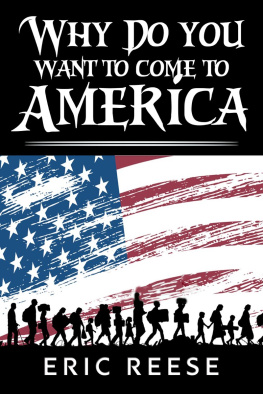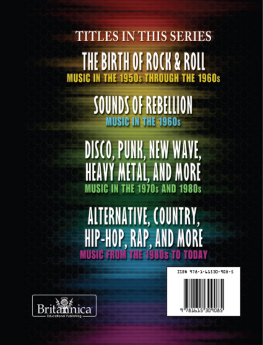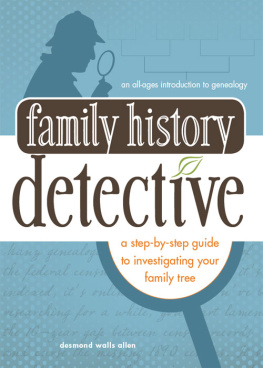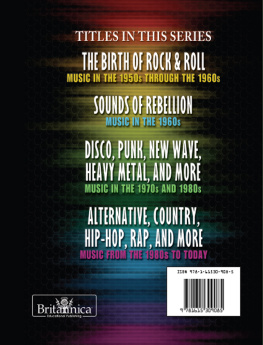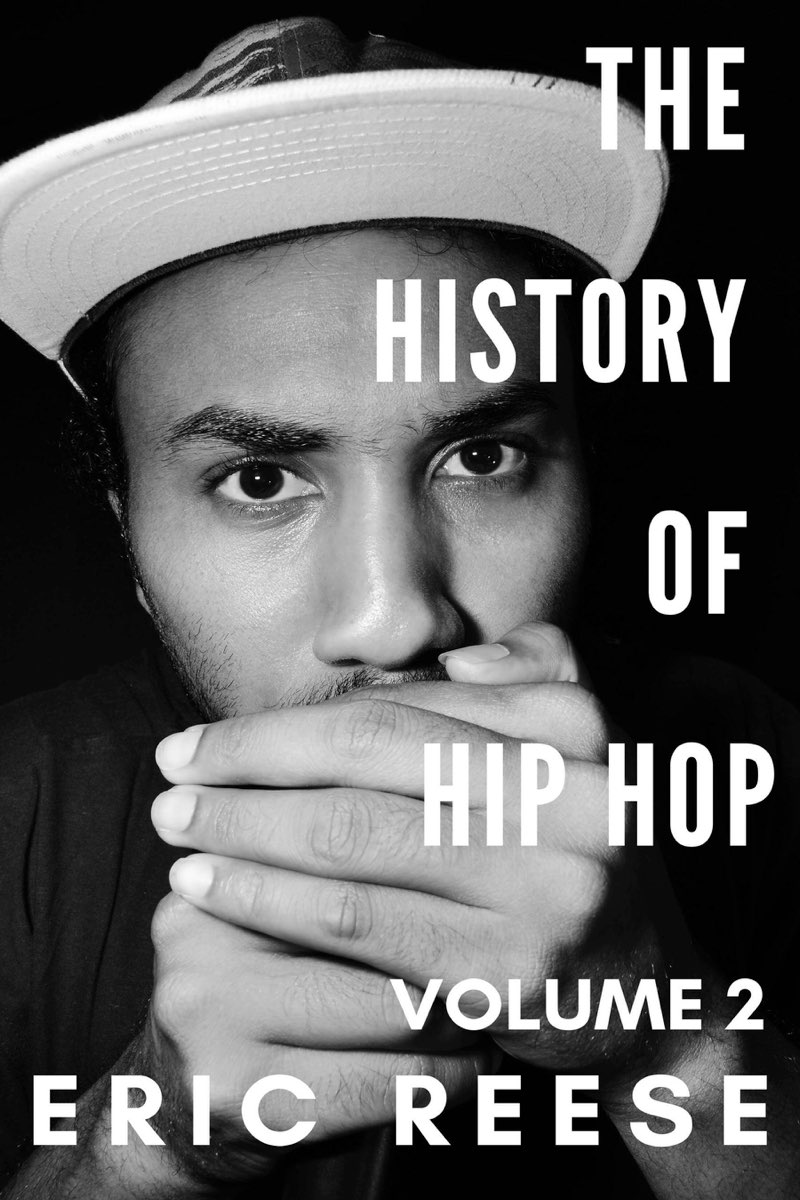THE HISTORY OF HIP HOP
VOLUME 2
ERIC REESE
Copyright 2019 by Eric Reese
All rights reserved.
No part of this book may be reproduced in any form or by any electronic or mechanical means, including information storage and retrieval systems, without written permission from the author, except for the use of brief quotations in a book review.
For the true hip-hop fan!
CONTENTS
INTRODUCTION
Hip-Hop began in the Bronx in New York City during the late 1970s. The origins of the word are often disputed. Some argue whether it started in the South or West Bronx. While the term hip hop is often used to refer only to hip hop music (also called rap), hip hop is four elements considered essential to understanding hip hop musically. Afrika Bambaataa of the hip hop collective, Zulu Nation outlined the pillars of hip hop culture, coining the terms: rapping (also called MC or Microphone Commander), a rhythmic vocal rhyming style (orality), (turntablism), which is making music with record players and DJ mixers (aural/sound and music creation), b-boying/b-girling/break dancing (movement/dance), and graffiti art. Other elements of hip-hop subculture beyond the main four are: hip-hop culture and historical knowledge of the movement (intellectual/philosophical); beatboxing, street entrepreneurship; hip-hop language, and street knowledge among others.
Even as the hip-hop movement continues to expand globally, the four foundational elements provide coherence and a strong foundation for hip-hop culture. Hip Hop is simultaneously a new and old phenomenon; the importance of sampling tracks, beats, and basslines from old records to the art form means that much of the culture has revolved around updating classic recordings, attitudes, and experiences for modern audiences. Sampling older culture and reusing it in a new context or a new format is called flipping in rap culture.
Hip hop follows in the footsteps of earlier African-American-rooted musical genres such as blues, jazz, rag-time, funk, and disco. It is the language known to urban environments of America. According to KRS-One, Hip hop is the only place where you see Martin Luther King Jr.s I Have a Dream Speech in real life. KRS also mentions that hip hop is beyond something such as race, gender, or nationality; it belongs to the world.
In 1990, while working with the rap group Snap!, Ronald Bee-Stinger Savage, a former member of the Zulu Nation, is credited for coining the term Six Elements of the Hip-Hop Movement by being inspired by Public Enemys recordings. The elements are:
Consciousness Awareness
Civil Rights Awareness
Activism Awareness
Justice
Political Awareness
In the 2000s, with the rise of new media platforms and Web 2.0, fans discovered streamed hip-hop through Myspace, YouTube, WorldStar Hip-Hop, SoundCloud, and Spotify.
ELEMENTS OF HIP-HOP
In the beginning, the house of Hip Hop was built on five fundamental pillars MCing, DJing, Breakdance, Graffiti, and Knowledge. A house built on rock must stand. The pillars ushered Hip Hop into the 21st century as a cultural phenomenon was formulated by DJ Afrika Bambaataa of the hip-hop collective, Zulu Nation. The knowledge of the five elements might not be widespread, but its structural significance should not be understated. With a myriad of styles to hip hop, the elements provide coherence to the genre. Lets break them down:
1) DJing (aural) This was a newfound manipulation of sounds that were used to create music. The innovative breaks and isolation of the percussive beat gave hip-hop its initial rise. Kool DJ Herc, who was the first to create hip-hop in the 1970s, started this new form of DJing. In the early days, the DJs were the stars and later rappers such as Kurtis Blow and Grand Master Flash with their ingenious rhymes took the spotlight.
2) MCing (oral) Manifested from the social conditions of the time. This form of poetic and verbal acrobatics was derived from ancient African culture and oral tradition. Also known as rapping this element removed the veil that isolated the wider culture from the social conditions of many under-served urban communities. The rapid-fire wordplay spoke the truth of stories that werent being told and gave rise to a new urban narrative.
3) Breakdance (physical) Groups such as Shaka Zulu Kings, Zulu Queens, and the Rock Steady Crew gave rise to B-Boying/B-Girling. Breaking can be described as poetry in motion. Its acrobatics style with influences of gymnastics, Capoeira, martial arts, and other cultural influences speaks to the innovative wave ushered in by hip-hop culture.
4) Graffiti (visual) This is one of the most controversial of the elements. As most graffiti artists leave their artwork in public places and tag it by leaving their names. TAKI 183, made this form of artistic representation famous and in neighborhoods such as Wynwood, Little Haiti, and Opalocka, we can see this art forms widespread integration with bursts of energy and vibrancy on buildings throughout the cities.
5) Knowledge (mental) This element is the thread that weaves all the other elements together. Knowledge of self refers to the Afro-diasporic mix of spiritual and political consciousness designed to empower members of oppressed groups, according to Travis Gosa in his book entitled The Fifth Element of Hip Hop: Knowledge. This quote merges with the vision that Bambaataa had of hip-hop as a force for social change. Bambaataa states that America has systematized our minds to be into materialism, but instead of buying into this notion, we should think about how we can give back to our communities.
Hip Hop is more than art, but is a social movement that values art as a form of disrupting the norm and creating dialogue that encourages societal change.
HIP-HOP THROUGH THE YEARS
In the 1980s, the next wave of musicians from New York came to light. At the forefront was Run-DMC, a trio of middle-class African Americans from Queens who fused rap with hard rock, defined a new style of hip fashion and became staples on MTV as they brought rap to a mainstream audience. They were signed to Profile Records, one of several new labels that took advantage of the growing market of rap artists.
Def Jam Records had three of the dopest hip-hop artists on their label; LL Cool J, raps first romance rapper; the Beastie Boys, the first white hip-hop trio who broadened raps audience and popularized digital sampling and Public Enemy, who rapped on African American social awareness similar to Grandmaster Flash and the Furious Fives song, The Message which was released in 1982.
During the Golden Era (19891993) De La Soulwhose debut album on Tommy Boy Records, 3 Feet High and Rising pointed hip hop in a more conscientious direction while female rappers such as Queen Latifah, MC Lyte, and Salt-n-Pepa offered lyrics pointing to feminism, black awareness, and female urban narratives. Hip-hop artists including DJ Jazzy Jeff and the Fresh Prince from Philly and M.C. Hammer, from Oakland, raised the roof in pop, dance, and commercialism.
The most impactful response to New Yorks hip-hop scene, came from Los Angeles, beginning in 1989 with N.W.A.s dynamic album, Straight Outta Compton. N.W.A. (Niggaz With Attitude) Ice Cube, Eazy E, MC Ren, DJ Yella, and Dr. Dreled the way as West Coast rap grew in prominence. Their graphic, violent tales of the real life of the inner cities, and those of LA rappers such as Ice-T, MC Eiht, and MC Breeze, and of East Coast counterparts such as Schoolly D and the Hilltop Crew gave rise to the genre known as gangsta rap. In the early 1990s, Death Row Records built an empire around Dr. Dre, Snoop Dogg, and the rapper-actor, Tupac Shakur, causing a rivalry with New York Citys Bad Boy Records led by Sean Puffy" Combs. This developed into a media-fueled hostility between the East Coast and West Coast, which culminated in the still-unsolved murders of Shakur and Notorious B.I.G.


